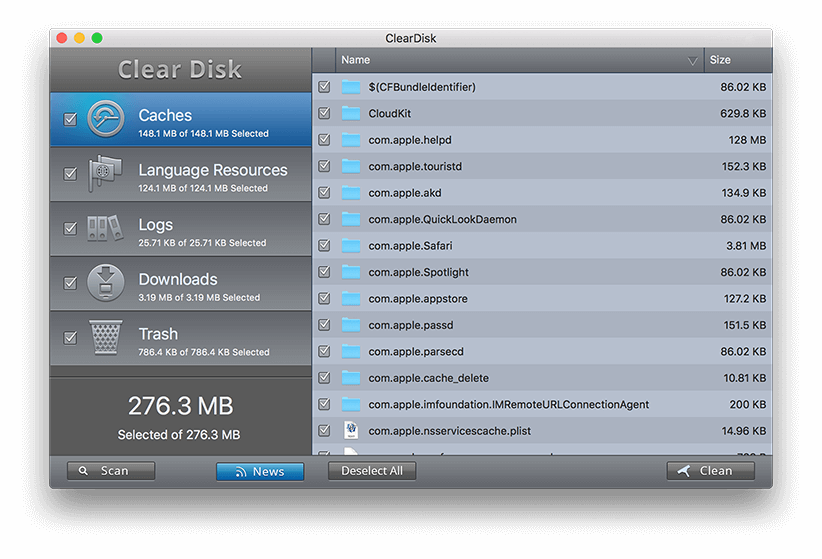


Delete Old and Unwanted Media Files Delete old media that you don’t want to keep Empty application caches, such as the one in Safariĥ. Your local user’s cache folder at / Library / CachesĬache files can be safely deleted, because an application will just create a new one when needed.The systemwide cache folder at // Macintosh HD / Library / Caches.Most applications store their caches in one of the following two folders: A typical example is Safari which has an Internet cache to save it re-downloading content from frequently visited websites. Some applications use caches to store various bits of information, but these files can grow very large over time and consume valuable disk space. When you’ve located the largest files on your Mac’s disk you might choose to compress, delete, or copy them to an external drive. You can also choose Save to create a smart folder of such items and add it to Finder’s sidebar, so you can find large files more quickly next time. Enter the size you want to search for in the adjacent text field (for example 5 MB) and change filter #3 to either MB or GB as appropriateįinder displays all the files matching the criteria you’ve entered.Click on the drop-down menu and choose Other. Click on the little + icon located just below the search field.In the search field just enter a space asterisk this will ensure that all items are included.To find particularly large files on your Mac’s hard disk, the quickest way is to use Finder:

#Disk cleanup on mac osx mac os x#
Deleting unused applications is easy in Mac OS X Note that there may be a few preferences files left behind by uninstalled apps, most of which can be found in the ~/ Library / Preferences folder and safely deleted. In Lion it’s made even easier – open Launchpad and hold down the Option key until the icons wiggle, then just click the small white “x” icon that appears next to any app that was installed from the App Store. Uninstalling applications in Mac OS X couldn’t be simpler – just delete the application by moving its icon to the Trash. For example, Pages is 266 MB and iPhoto a whopping 1.1 GB. In Mail, trash and junk emails can be automatically deleted by setting the relevant options in preferences.Īpplications can take up large amounts of space. There’s no need to keep your Mac’s Trash can full, especially if you make regular backups of your files. Remember that individual applications such as iMovie, iPhoto and Mail each have their own Trash, so empty those frequently too.
#Disk cleanup on mac osx free#
The most obvious and easy way to free up some space is to empty the Trash. About This Mac shows how much space is available on your hard disk A summary of each category is shown, which may help you to decide how best to reclaim disk space. Just click on that icon to open the stack.To check how much space you are using for different categories such as audio, movies, photos and applications, select About This Mac from the Apple Menu, click the More Info button followed by the Storage tab.

Consider the Use Stacks feature to automatically stack-up files of the same type into a single icon. Right-click (two-finger tap on a trackpad) any open space and choose Clean Up to get things arranged neatly, or Clean Up By to sort them as well. If your desktop is littered with icons, you should probably tidy things up a bit. But you may have old large files and documents, or apps that no longer even work on your version of macOS, that you can safely remove. Big library files (for apps like Lightroom or Final Cut Pro) are likely to show up here, and you might not want to mess with them. There are several sections here, like Large Files and Unsupported Apps, that are worth perusing. Then, click on Documents in the left tab. You can see all your installed applications here and sort them by size, easily deleting apps you haven’t used in ages. While you’re in the Storage Management app, click on the Applications tab in the left column. Take a look at your Applications and Documents


 0 kommentar(er)
0 kommentar(er)
